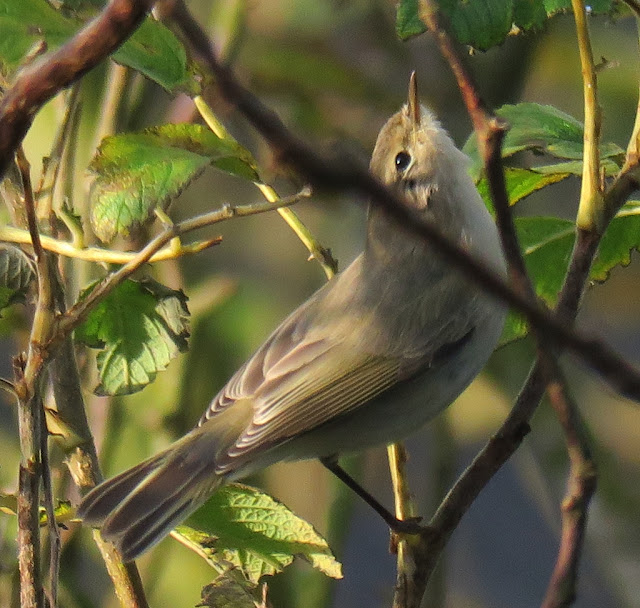The above photos are of the morphing Chiff that was in the garden for the day on Sunday. Initially it seemed to be another tristis/fulvescens type, particularly on the initial brief views. Then mid afternoon I relocated it outside the garden in good sunlight amongst the Rosa rugosa. At first it again looked brown but as I watched it the morphing thing occurred. The bird flew into some dense Rosa and emerged looking just like a collybita Chiff with lots of green tones on the breast sides and tail. The bird then proceeded to hover and flit in the tops of the Swedish Whitebeam, just like collybita Chiff. My experience of tristis type birds is that they don't feed like this and are slower moving and pick at leaves in low vegetation. At this point I reckoned there had to be two birds present and recorded it as such. The bird managed to evade me. However, watching from the kitchen window it was refound ten minutes or so later and I snuck outside the back door to capture the above photos. The bird differed consistently from the birds the previous week in having bright green edges to the primaries and secondaries - a feature that I believe would put it more in the tristis camp than fulvescens. However, whilst I watched it it on occasion morphed again and on some occasions more brightish green tones were apparent, just like collybita. I adjusted the record to one bird at this point. There are features for and against each form but I am tending to collybita. As well as the green tones and behaviour: the supercilium is not all that strong and does not really flare behind the eye, the eyering seems stronger than the supercilium, I would expect tristis to have a more uniform darker bill with fewer pale tones. The bird did not call, they tend not to here at this time of year, unhelpfully. I've put it in Birdtrack as collybita but it may well be tristis.
Rhytisma acerinum on one of the last Sycamore leaves (the two dark spots).
Shag and Snow Bunting at Northside.








No comments:
Post a Comment